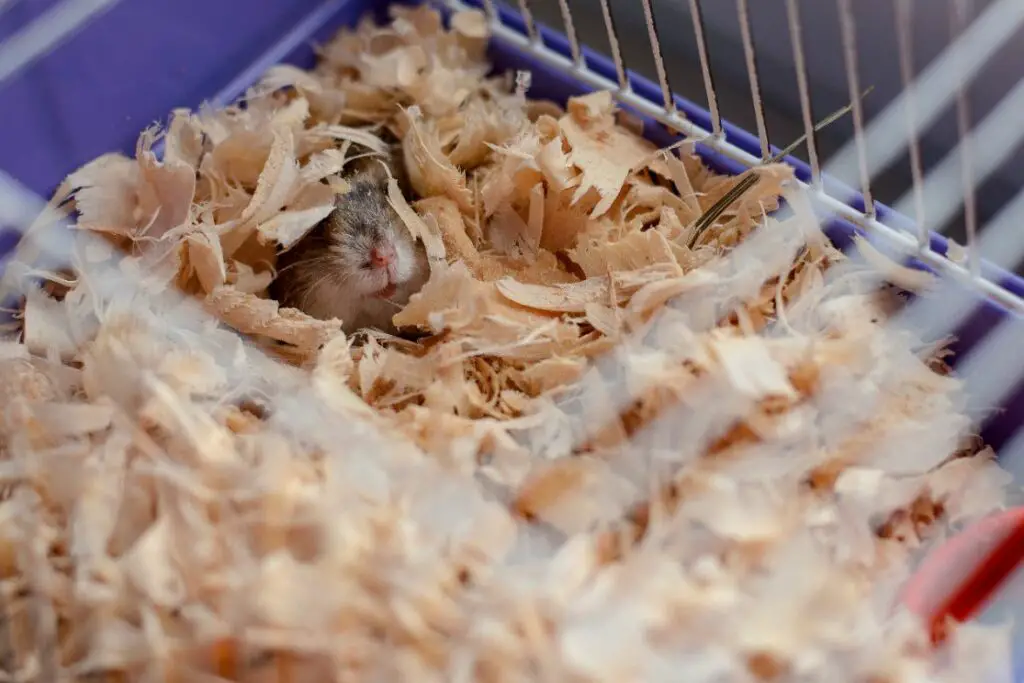Hamsters are cute and playful creatures that have become popular pets around the world. They are known for their small size, furry appearance, and friendly demeanor.
One of the interesting behaviors that hamsters exhibit is burrowing. In this blog post, we will explore the topic of hamster burrowing in detail and answer some of the most common questions related to this behavior.

What is burrowing?
Definition of burrowing
Burrowing is a behavior exhibited by many animals, including hamsters, where they dig tunnels or holes in the ground or other materials. The tunnels or holes can be used for shelter, protection, or as a means of transportation
Do hamsters burrow?
Types of hamsters that burrow
Most species of hamsters are known for their burrowing behavior. However, some species are better diggers than others. For example, Syrian hamsters, also known as golden hamsters, are not known for their burrowing skills, while dwarf hamsters, such as Roborovski and Campbell’s dwarf hamsters, are excellent burrowers.
However, this is not to say that Syrians hamsters do not burrow. They do indeed burrow, just to a lesser extent than dwarfs.
How do hamsters burrow?
Hamsters use their sharp claws and teeth to dig tunnels in the ground or other materials. They can remove large amounts of soil or bedding material in a short amount of time, making it easy for them to create complex tunnel systems.
Reasons why hamsters burrow
Hamsters burrow for various reasons, such as:
- To create a safe place to sleep
- To store food
- To hide from predators
- To regulate their body temperature
- As a means of exercise
Advantages and disadvantages of hamsters burrowing
Advantages of hamsters burrowing
Hamsters that have access to a burrow habitat are generally healthier and happier than those that do not. Some of the advantages of hamsters burrowing include:
- Provides a safe and secure environment
- Helps regulate body temperature
- Encourages natural behaviors, such as digging and exploring
- Provides mental stimulation
- Can promote healthy exercise
- Lowers stress
Disadvantages of hamsters burrowing
While hamsters burrowing can have many advantages, it can also have some disadvantages, such as:
- Can make it difficult to clean their habitat
- Can cause health problems, such as respiratory issues, if the bedding material is not appropriate
- Can make it difficult to spot and remove any health problems, such as wounds, that may develop
- Can be time-consuming to set up and maintain a burrow habitat
On the whole
On the whole, you should allow and encourage your hamster to burrow. While it might be more difficult to clean their cage or set it up properly, the enjoyment that you give your hamster by allowing them to engage in this natural urge is definitely worth the effort.
Hamster burrow habitat
The best type of substrate for burrowing
To create a suitable burrow habitat for your hamster, it is important to use the right substrate. Some of the best substrates for burrowing include:
- Coconut coir
- Compressed paper bedding
- Aspen shavings
- Soil
- Sand
How to set up a burrow habitat for a hamster
To set up a burrow habitat for your hamster, you will need to provide them with a deep layer of substrate, such as the ones mentioned above. You can also add tunnels, hideouts, and other enrichment items to make their habitat more interesting and stimulating.
Make sure that the layer of substrate is at least 8 inches deep. The deeper you can make the layer of substrate, the better. In the wild, hamsters create burrows that are around 20 to 25 inches deep, so you can’t go wrong by giving them as thick a layer of substrate as possible.
Conclusion
In conclusion, hamsters are natural burrowers, and providing them with a suitable burrow habitat can have many benefits for their health and wellbeing. By using the right substrate and enrichment items, you can create a safe and stimulating environment for your pet hamster.
- How Long Do American Eskimo Dogs Live? Important Factors and Care Tips - September 29, 2023
- Do American Bulldogs Need Grooming? Essential Tips and Care Guidelines - September 29, 2023
- Do Bengal Cats Enjoy Playing? Essential Tips for Keeping Them Active - September 29, 2023